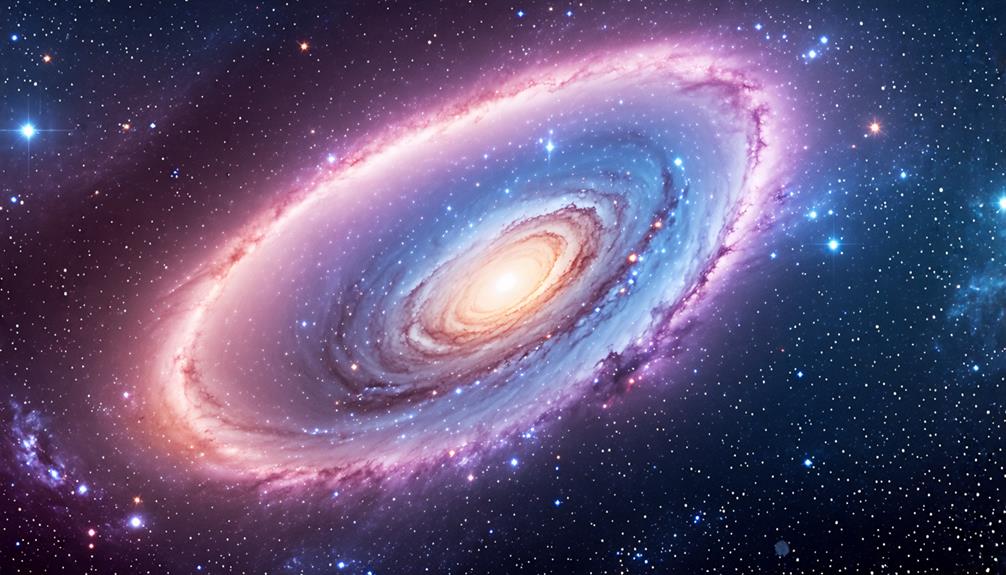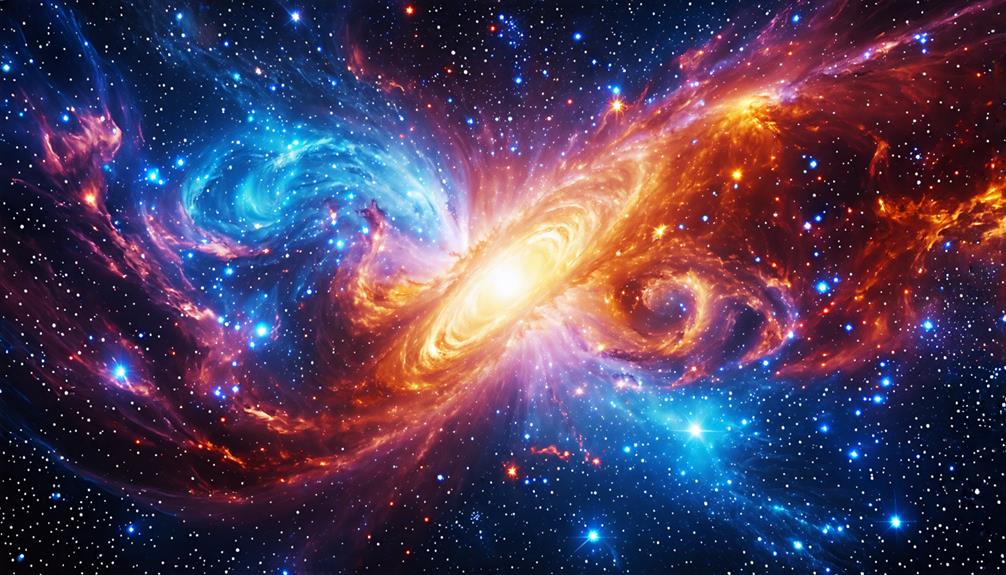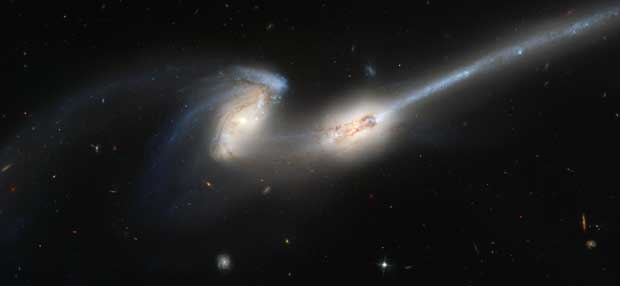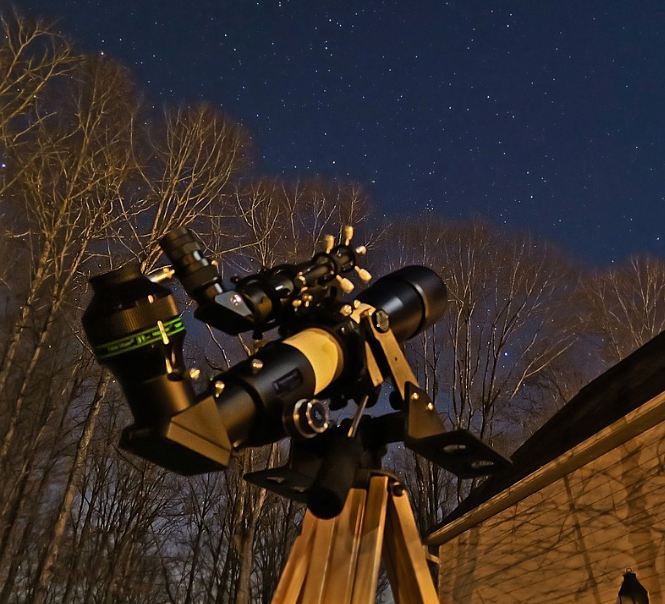Galactic Cannibalism: How Larger Galaxies Devour Their Neighbors
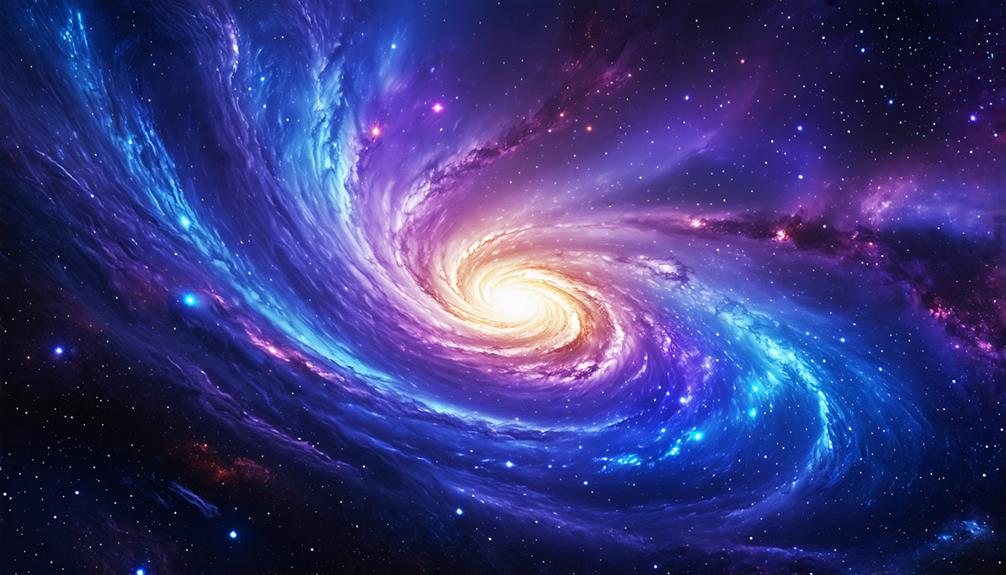
Exploring the phenomenon of galactic cannibalism reveals how larger galaxies consume their smaller neighbors, reshaping the cosmic landscape and contributing to their own evolution. For example, the Milky Way's history is rich with such interactions, shedding light on its growth. Understanding what drives these cosmic mergers and their impact on the universe unveils a complex and fascinating narrative.
Understanding Galactic Cannibalism
Galactic cannibalism refers to the process where larger galaxies, such as the Milky Way, consume smaller galaxies, thereby reshaping their own structure and fostering their growth. This phenomenon plays a crucial role in galaxy formation and influences the evolutionary history of the universe. When larger galaxies assimilate smaller ones, they undergo significant structural changes, often incorporating dwarf galaxies in the process.
For example, both the Milky Way and Andromeda galaxies have histories marked by such feeding events, which have contributed to their current massive sizes. The Milky Way has been observed to cannibalize dwarf galaxies, with evidence of these interactions found in tidal streams and globular clusters. Similarly, Andromeda experienced significant feeding events around 5 billion years ago and between 8 to 10 billion years ago, demonstrating its own episodes of galactic cannibalism. Studying these dynamics reveals how galaxies interact over time, leading to the formation of the larger structures we observe today. By examining galactic cannibalism, researchers uncover the intricate processes of cosmic evolution that shape the universe.
Evidence From the Milky Way
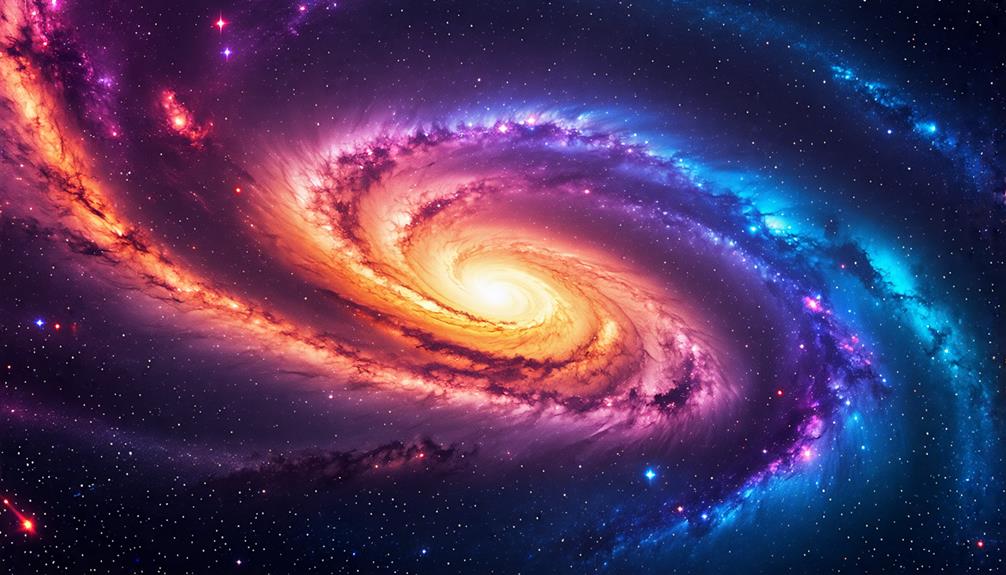
Evidence from the Milky Way clearly demonstrates its history of consuming smaller dwarf galaxies through numerous observable phenomena. The presence of tidal streams highlights past consumption events, where stars exhibit varied orbital directions, indicating the remnants of these smaller galaxies. Omega Centauri, a prominent globular cluster, serves as a prime example, believed to be the remnant of a captured dwarf galaxy.
This evidence is summarized in the table below:
| Evidence Type | Description | Implications |
|---|---|---|
| Tidal Streams | Stars with varied orbital directions | Remnants of consumed dwarf galaxies |
| Globular Clusters | Clusters like Omega Centauri show signs of accumulation | Support for galactic cannibalism |
| Cold Dark Matter Model (CDM) | Suggests Milky Way formed through smaller clump mergers | Highlights the history of consumption events |
These findings support the theory of galactic cannibalism, demonstrating that the Milky Way has actively consumed dwarf galaxies over time. As it heads toward a collision with Andromeda in approximately 4-5 billion years, further changes in structure and additional cannibalistic interactions are expected.
Andromeda's Feeding History
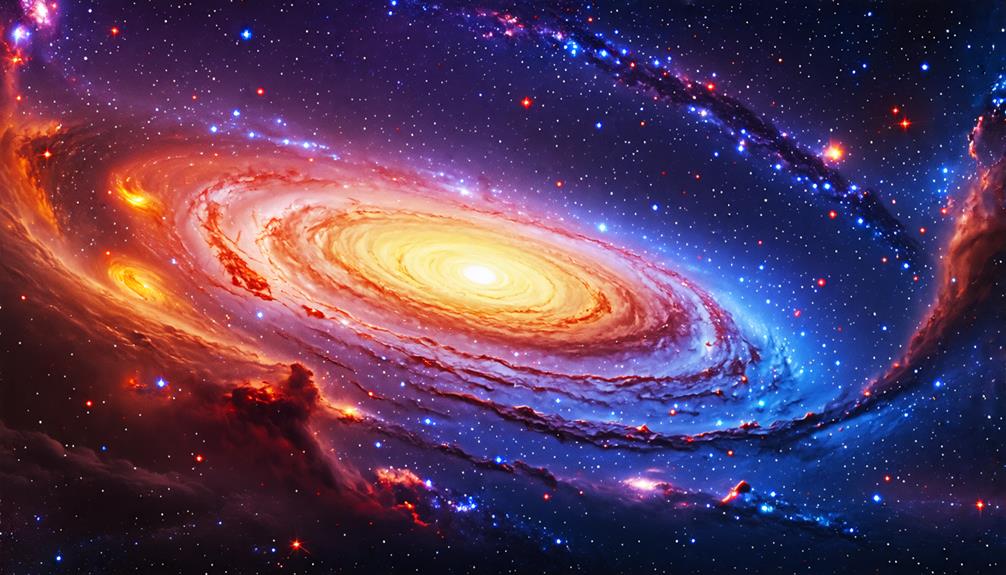
Andromeda's feeding history highlights two significant events that have influenced its evolution. These cannibalistic encounters, evidenced by structures such as the Dulais Cluster, provide valuable insights into the galaxy's growth. Understanding this history may reveal similar behaviors that could occur in our own Milky Way.
Major Feeding Events
Andromeda's evolution has been significantly influenced by two major feeding events, where it absorbed smaller galaxies approximately 5 billion years ago and between 8 to 10 billion years ago. These tumultuous events contributed to Andromeda's growth, shaping it into the massive galaxy we observe today. Research led by Geraint Lewis indicates that during these times, the universe had a higher matter density, which facilitated intense galactic interactions.
The Dulais Structure, a globular star cluster, is believed to be a remnant from one of these galaxy-sized meals, underscoring Andromeda's cannibalistic behavior. These feeding events are part of a broader pattern of Andromeda's periodic consumption of neighboring galaxies, reflecting the dynamic nature of galaxy evolution. This behavior not only highlights Andromeda's growth but also provides insights into the developmental processes of galaxies, including the Milky Way.
Cannibalism Evidence and Impact
Research indicates that Andromeda's history of galactic cannibalism has left significant imprints on its structure and composition. One notable piece of evidence is the Dulais Structure, identified by Geraint Lewis, which comprises 10-20 misaligned globular clusters in Andromeda's halo. These clusters, remnants of accretion events from about 5 billion years ago and between 8 to 10 billion years ago, have substantially contributed to Andromeda's growth.
The globular clusters within the Dulais Structure exhibit lower metallicity levels, suggesting they originated from smaller, metal-poor galaxies rather than forming within Andromeda itself. This finding underscores the importance of studying Andromeda's accretion history to understand galaxy evolution and the dynamics of galactic interactions. By examining these feeding events, researchers gain insights into the mechanisms through which larger galaxies, like Andromeda, assimilate smaller neighbors, thereby reshaping their structure and composition. Understanding these processes not only sheds light on Andromeda's past but also enhances our broader knowledge of galactic cannibalism and its role in the evolution of galaxies throughout the universe.
The Role of Ultra Compact Dwarfs
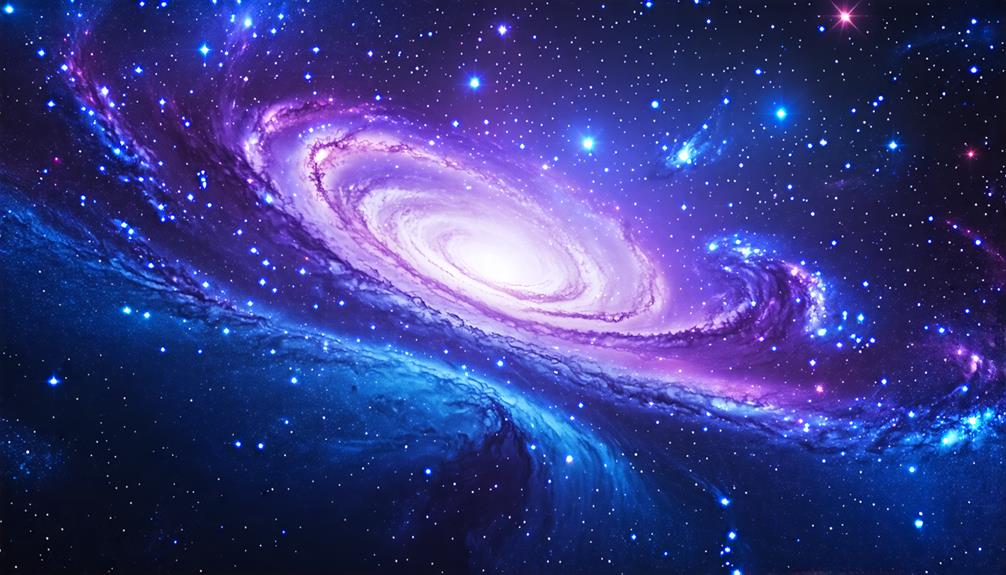
Ultra Compact Dwarfs (UCDs) serve as intriguing remnants of ancient dwarf galaxies that endured galactic cannibalism. By examining these dense cores, researchers can gain valuable insights into galaxy evolution and the dynamics of cosmic interactions. Studying UCDs elucidates how environmental changes impact the fate of smaller galaxies in the universe.
UCDs as Galaxy Fossils
Ultra-Compact Dwarfs (UCDs) serve as cosmic time capsules, revealing intricate histories of galactic interactions and processes like galactic cannibalism that shape galaxy clusters. These UCDs are remnants of ancient dwarf galaxies that have survived such interactions, retaining dense cores while their outer layers were stripped away. Observations from the Gemini North Telescope have shown that many galaxies within the Virgo Cluster exhibit signs of being stripped, suggesting a significant number of undiscovered UCDs.
Studying UCDs allows astronomers to trace the evolution of galaxy clusters, as they act as vital indicators of past cosmic interactions. They exemplify the effects of environmental transformations on galaxy evolution, providing insights into how larger galaxies devour their smaller counterparts. By examining these remnants, researchers can better understand the history of mergers and the contributions of ancient galaxies to the universe's overall structure. In essence, UCDs not only tell the story of galactic cannibalism but also help map the evolutionary pathways that have shaped the cosmos, making them invaluable in astrophysics.
Insights Into Galactic Evolution
Galactic evolution is intricately revealed through the study of Ultra Compact Dwarfs (UCDs), which demonstrate how smaller galaxies have not only survived but also influenced the cosmic landscape through interactions with larger galaxies. UCDs are the dense cores of ancient dwarf galaxies that have withstood galactic cannibalism, where larger galaxies have stripped away their outer layers. Recent research using the Gemini North Telescope identified 106 galaxies in the Virgo Cluster exhibiting signs of this stripping, suggesting they are in late stages of becoming UCDs.
These UCDs serve as crucial fossil remnants, providing insights into the dynamics of galaxy clusters and the impact of environmental changes on the survival of dwarf galaxies. Each UCD encountered offers a glimpse into the past, showing how low-mass remnants can persist despite the challenges of galactic evolution. The presence of these UCDs implies that many more low-mass remnants are yet to be discovered, enhancing our understanding of historical galaxy interactions. Ultimately, UCDs are key indicators of past galactic interactions, helping to assemble a comprehensive picture of how galactic cannibalism influences cosmic structure and shapes the universe.
Observational Techniques and Discoveries
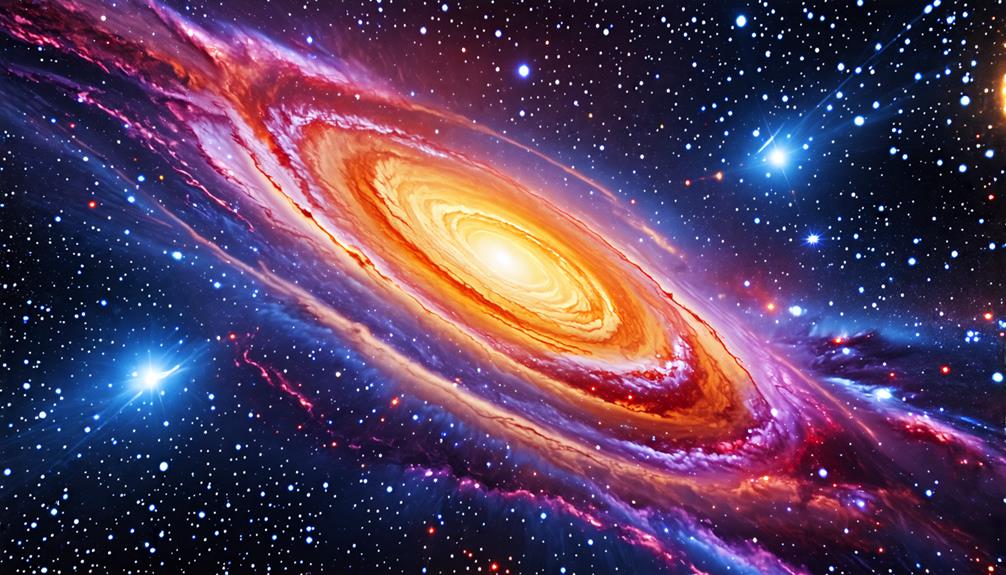
Leveraging advanced observational techniques, researchers have identified candidates for Ultra Compact Dwarfs (UCDs) within the Virgo Cluster. They employed a systematic approach involving three main steps:
- Initial Candidate Selection: Using the Canada-France-Hawaii Telescope, they filtered out background galaxies to isolate potential UCD candidates.
- Detailed Distance Measurements: The Gemini North Telescope provided precise distance measurements, essential for determining the spatial relationships between these galaxies and their larger counterparts.
- Analysis of Environmental Transformation: By observing 106 galaxies, researchers detected signs of stripping, indicating ongoing galactic cannibalism.
These findings elucidate the dynamics within cluster environments where ancient dwarf galaxies are often consumed by larger ones. The results, published in Nature on November 8, 2023, emphasize how cluster dynamics influence galaxy survival and evolution. UCDs act as fossil remnants of these interactions, offering valuable insights into past galactic histories. This research highlights the intricate dance of galaxies within the Virgo Cluster and the relentless forces of galactic cannibalism at play.
Implications for Galactic Evolution
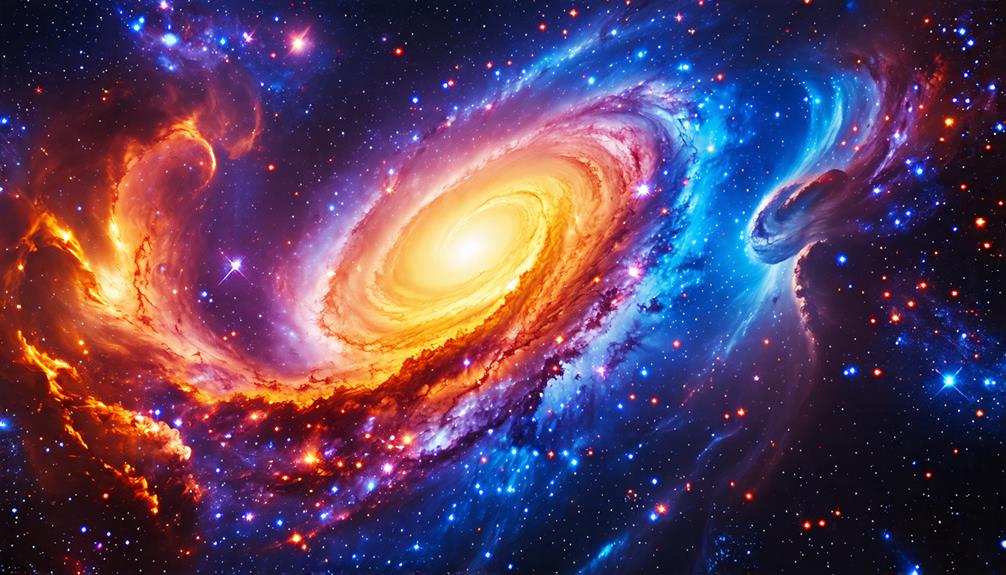
Galactic cannibalism significantly influences the evolution of galaxies, affecting their structures, star formation rates, and overall dynamics. Larger galaxies, such as the Milky Way and Andromeda, grow by merging with smaller dwarf galaxies, leading to the formation of features like Ultra Compact Dwarfs (UCDs). Observing tidal streams around galaxies provides evidence of these past interactions, revealing how they have shaped the galaxies' current forms.
For instance, the Milky Way's history of consuming dwarf galaxies is evident in remnants like Omega Centauri. Similarly, Andromeda's Dulais Structure, which includes misaligned globular clusters, highlights sporadic feeding events that enhance our understanding of galactic evolution.
These interactions not only modify the physical structures of galaxies but also impact their star formation rates. When larger galaxies absorb smaller ones, they can trigger bursts of star formation, thereby reshaping the cosmic landscape. Overall, galactic cannibalism is crucial in determining the fate of galaxies, shaping their evolution, and influencing the dynamics of the universe.
Future Research Directions
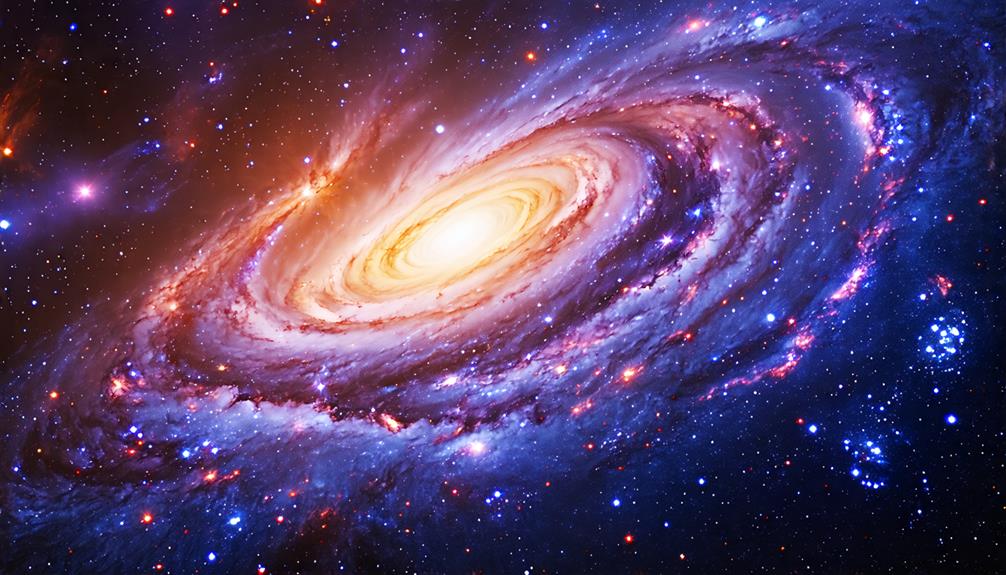
Focusing on Andromeda's Dulais Structure, future research aims to uncover the intricacies of its formation and the galaxy's cannibalistic history. Researchers are encouraged to consider several key directions:
- Gathering Observational Data: Collecting additional data to confirm the characteristics and origins of the Dulais Structure will shed light on Andromeda's history of galactic mergers and accretion events.
- Exploring Globular Clusters: Investigating the spatial distribution and distance measurements of globular clusters associated with Andromeda's past feeding events will help elucidate their evolutionary histories and potential external origins.
- Illuminating Accretion Events: Analyzing the connections between the Dulais Structure and younger accretion events will clarify Andromeda's growth timeline, offering insights into the processes of galactic accretion.
These research directions aim to establish a comprehensive understanding of galactic accretion events. As the study progresses, it will enhance our knowledge of Andromeda and contribute valuable insights into the evolution of the Milky Way. This exploration promises to reveal the complex interplay between galaxies and their histories.
Conclusion
Exploring galactic cannibalism unveils a captivating narrative of cosmic evolution. By examining the Milky Way and Andromeda, we understand how these massive galaxies shape their environments and grow through interactions with smaller galaxies. The inclusion of ultra-compact dwarfs further enriches this story, highlighting the complexities of galactic dynamics. Ongoing research promises to reveal new insights, deepening our comprehension of the universe and its intricate, ever-evolving tapestry of galaxies.

